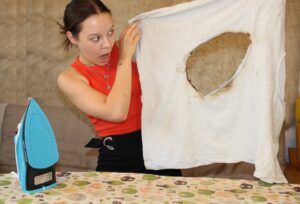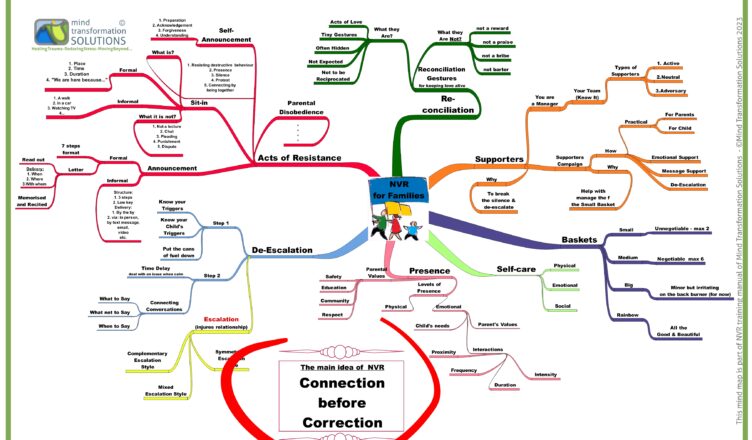This is my typical way of introducing NVR to potential participants of NVR school groups during so-called tester sessions. It is also used in mini-presentations to school staff (those presentations include more than this analogy!). To grab an audience’s attention I enact the story and use objects like scarf and iron to illustrate the point.
Please have a look at a delicate scarf. It represents a bond, relationship between a parent and child (or simply two people) who hold it at the other ends. This shawl may be twisted, may be creased or maybe artfully arranged but its essence is – connection. It keeps people together. At times one person drops the scarf – for various reasons. The child finds himself detached. Now, s/he may need to seek somebody else to hold the other end of the scarf for him. Because being connected seems to be very important to many of us.
When the child loses a grip on the connecting scarf and finds himself grabbing another person’s shawl, it may be because it looks more attractive or maybe more robust. Maybe it offers more sense of security?
The letting go of the scarf represents a difficult circumstance in the parent’s life, e.g. parental mental health or physical illness, bereavement, new relationship, new baby, which may impact the parental presence and connection with the child.
Causes of the child’s disconnection might be related to adolescence, outside home influences, or the child’s additional special needs which interfere with the child’s ability to connect with others (ASD, ADHD and other possible conditions).
NVR, in such instances, would be used to pick up the scarf – reconnect.

Often the scarf stays securely in parent and child’s hands, however the fabric of it is battered, there are holes in the scarf or the material is so worn out. Maybe the parent or child tried to iron creases on the scarf but the iron was too hot for the delicate fabric of their relationship?
Might it be too harsh disciplining and too little nurturing? Too many escalations with too little reconciliation gestures?
The scarf, even if in good condition and hold tightly will be affected by polluted environment. Delicate fabric can absorb bad smell or can change colour due to smoke in the air. It may get stained by other people’s spills. Our relationships are not isolated from our contexts, therefore the impact of the others may be significant.
In such cases, NVR would be used to maintain the scarf in as good condition as possible according to the requirements of the fabric of the relationship. Adjusting the iron’s temperature would be a prime example. Ironing creases are important – disciplining is necessary, yet the manner in which it is done makes a difference to the well-being of the relationship.
The question is what the scarf is for? If it is held and the fabric is strong using it to lead someone to follow proves easy. If a parent senses that the child’s direction needs to be corrected it is useful to pull him back on the right track. At times a heavy tugging is necessary and that is achievable when both the parent and child are closely linked.
The principals and techniques of NVR are about connection. Connection before correction. It is about developing a positive relationship in order to be able to influence the child when a need be. It is about finding effective ways of maintaining the or repairing the relationship.
You lead s/he follows. Then s/he leads and you may find yourself willingly going where your child wants to take you.
More about NVR
If you are interested in NVR training or you are already NVR facilitator, supporter, parent and you seek consultation or supervision contact us via email ![]()





